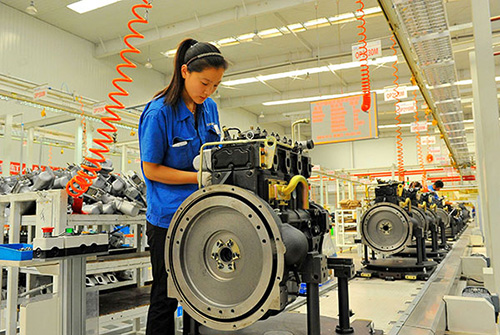China's economy: the inevitable adjustment
By Ken Davies (chinadaily.com.cn) Updated: 2016-02-02 10:02China has actually been recovering only a small percentage of the value-added of the high proportion of exports accounted for by foreign-invested enterprises. That's why Apple has such a high share price in the United States even though its iPhones and iPads are "Made in China" (but, please note, "Designed in California").
China has established itself as the world's foremost manufacturer in terms of quantity. It now has to switch to higher-quality exports driven by innovation and quality control, both of which can ensure that the total value-added is bigger and keep more of the value-added in China, and both of which have so far eluded expensive efforts of policymakers to achieve them.
Both before and during the reform period (since the end of 1978), the chief driver of economic growth has been investment, especially in expanded output of products. This is normal for a developing economy, but advanced economies inevitably move to a more consumer-oriented one, less reliant on capital expenditure and exports and more dependent on household spending.
The government has been trying to implement this model, with consumption a much higher proportion of GDP, for some time. It has been promoting leisure activities, including longer weekends, longer vacations, domestic and foreign tourism, and much else, since the 1990s. It has been trying to develop services industries, including retail finance, tourism, entertainment and sports.
At the same time, incomes have been rising. Lewis' "unlimited supply of labor" has at last come to an end, as workers have gone back to their villages and coastal employers have been compelled to raise wages to lure them back.
A major feature of the readjustment process is a slowing of growth to rates more like those in other advanced economies, i.e. well below the 10 percent per annum of the reform period and also well below the current rate. If China's GDP were to rise at an annual rate of 5 percent a year for the next 10 years, it would still be a very respectable rate of development, and still one of the highest in the world.
The author is president of Growing Capacity, Inc., an economic policy consultancy. He is former chief economist, Asia for the Economist Intelligence Unit and head of global relations in the OECD's Investment Division.
- Luxury auto market feels the sting of China's slowdown
- New head committed to Infiniti roadmap
- Backed by Tencent, startup puts prominent names behind wheel
- Alternative yardsticks show upbeat signs in Chinese market
- Xiaomi denies authorizing US handset sales
- World Bank loans finance Hebei clean heating system
- China's logistics sector continues to expand
- PayPal research shows 2015 was the year of haitao
















